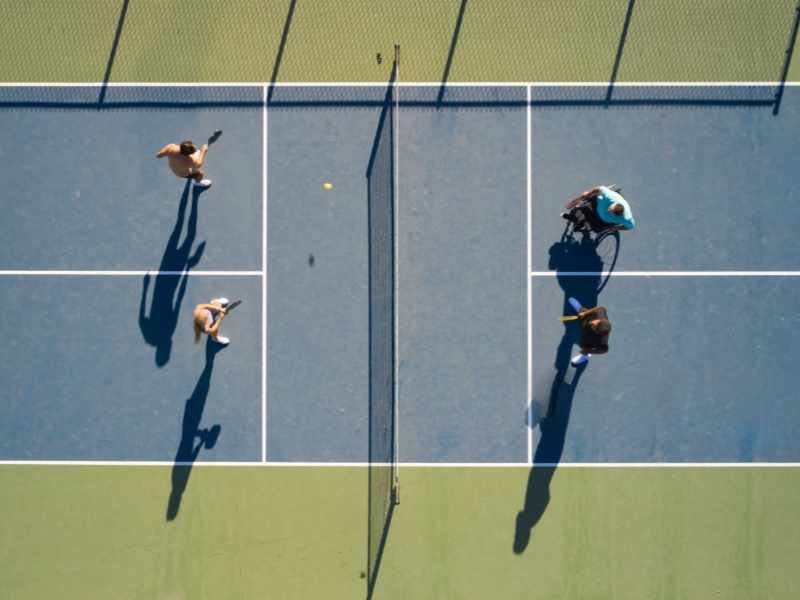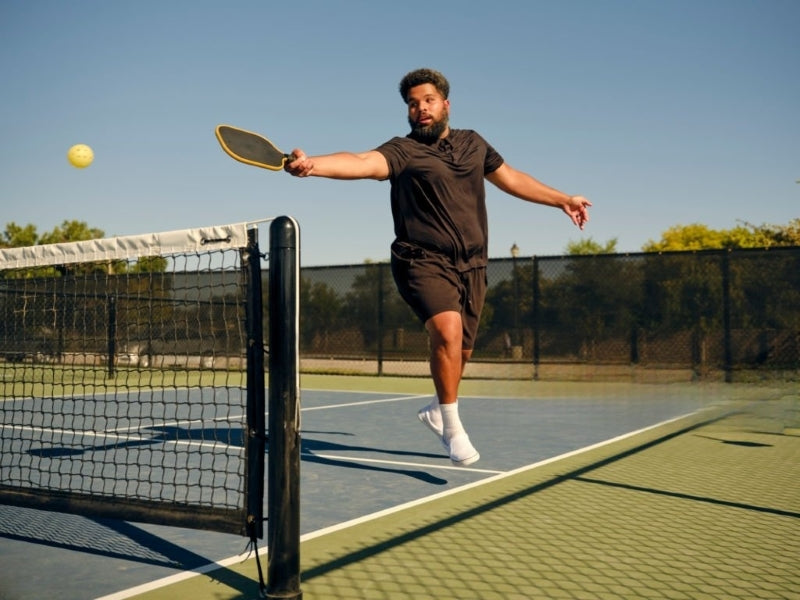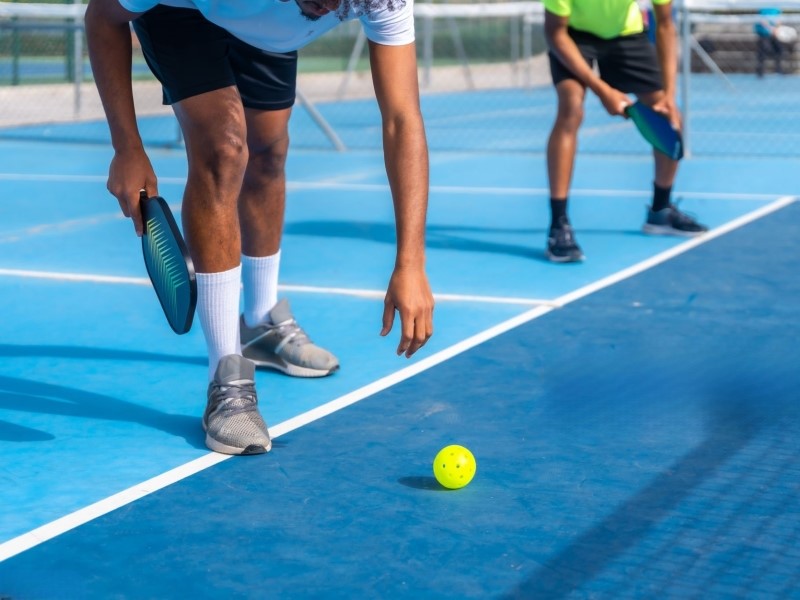As pickleball continues to grow in popularity across communities, schools, and sports clubs, organized leagues have become a key part of the sport’s competitive landscape. Whether you're playing for fun or competing for a championship title, understanding how pickleball league standings work is essential. Standings determine your rank, playoff eligibility, and how well you’re performing compared to others in your division.
What Are Pickleball League Standings?
Pickleball league standings are a method of ranking players or teams over the course of a season or session. Standings are based on performance metrics such as match wins, game wins, points scored, and more, depending on the league format.
Standings help determine:
- Which teams qualify for playoffs or finals
- Seeding for tournaments
- End-of-season awards or placement
- Skill level classification for future leagues
Each league may use slightly different rules, but most follow a basic formula that includes matches played, matches won, and additional scoring statistics.
Pickleball League Formats That Affect Standings
Before diving into how the standings are calculated, it’s important to know the league format you're playing in. Common pickleball league formats include:
1. Team-Based Leagues
Teams of players (usually doubles pairings) compete against other teams each week. Each match typically includes multiple games, and teams earn points for each game won.
2. Individual Rotational Leagues
Players are grouped with different partners each week, and standings are based on individual performance, not fixed teams.
3. Ladder Leagues
In ladder formats, players or teams move up or down based on their results each week. Rankings are adjusted dynamically, and standings are based on position within the ladder.
4. Round Robin Leagues
Each team or player plays against all others in a set schedule. Standings are determined by overall win-loss record and points.
Understanding your league’s format is the first step in interpreting the standings properly.
How Is Scoring Tracked in Pickleball Leagues?

Scoring is the foundation for determining league standings. Here are the key components typically recorded each week:
1. Match Wins (W)
The number of matches a player or team wins. A match may be best of 1, 2, or 3 games depending on the league format.
2. Game Wins (GW)
Total number of individual games won. This is often used as a secondary ranking factor.
Points For (PF)
The total number of points a team scores during all games. This helps track offensive performance and is used in some tie-breaking systems.
Points Against (PA)
The number of points scored by opponents against your team.
Point Differential (PD)
Calculated as Points For minus Points Against (PF - PA). A high differential usually indicates dominant wins and can play a crucial role in tie-breaker situations.
Win Percentage (WPCT)
Especially in ladder or round robin leagues, win percentage may be used instead of just raw wins. It's calculated as:
WPCT = Total Wins / Total Matches Played
How League Rankings Are Calculated
The ranking system used in league standings typically follows a hierarchy of priority:
- Total Matches Won – The more matches a team wins, the higher their ranking.
- Game Win Percentage – If two teams have the same match record, the number of games won may be used as a tie-breaker.
- Point Differential – Helps determine how competitive teams were in their matches.
- Head-to-Head Record – If tied teams played against each other, the winner of that match may be ranked higher.
- Points Scored – Used as a final tie-breaker in many leagues to reward teams that consistently score.
Each league may weigh these factors differently, so always check your specific league’s rules.
Example: How a Weekly Standings Table Might Look
|
Team Name |
Matches Played |
Matches Won |
Games Won |
Points For |
Points Against |
Point Differential |
Win % |
|
Paddle Pros |
5 |
4 |
10 |
110 |
80 |
+30 |
0.800 |
|
Smash Sisters |
5 |
4 |
9 |
105 |
85 |
+20 |
0.800 |
|
Dink Masters |
5 |
3 |
8 |
95 |
90 |
+5 |
0.600 |
In this case, Paddle Pros and Smash Sisters are tied in matches won, but Paddle Pros have a better point differential, so they would be ranked higher.
How Do You Break a Tie in a Round-Robin Pickleball Tournament?
Ties are especially common in round-robin pickleball tournaments, where each team or player competes against all others in the pool. Because everyone plays an equal number of matches, it’s not unusual for two or more teams to end up with identical win-loss records. To ensure fairness, most tournaments apply a specific set of tie-breaker rules in a strict order.
Here’s how ties are typically broken in a round-robin pickleball setting:
1.Head-to-Head Results
If the tied players or teams faced each other during round-robin play, the outcome of that match is usually the first tiebreaker. The winner of that head-to-head match is ranked higher.
2.Point Differential
This is the difference between points scored and points allowed across all matches. A higher positive differential indicates stronger overall performance and gives an edge in tie-break scenarios.
3.Total Points Scored (Points For)
If the point differentials are identical, the total number of points scored by a team or player can be used to reward offensive consistency.
4.Fewest Points Allowed (Points Against)
Some tournaments also reward defensive performance by considering which team allowed the fewest points during round-robin play.
5.Random Draw or Playoff
In rare cases where all measurable statistics are tied, organizers may use a coin flip, random draw, or a mini playoff game to break the tie.
Always check your tournament’s official rules in advance, as formats may vary slightly depending on the organizer. Knowing the tiebreaker structure can also help inform your in-game strategies—every point truly matters.
How to Track Your Standings Throughout the Season
Many leagues provide weekly updates through spreadsheets, apps, or websites. Here are some tips for tracking your progress:
- Use League Management Software like PickleballBrackets, DUPR, or CourtReserve for live standings and stats.
- Track Your Own Stats using a notebook or app to analyze performance trends.
- Focus on Improvement Metrics like reducing points against or improving point differential, not just wins.
Why Standings Matter
Standings aren’t just numbers—they reflect growth, teamwork, and consistency. Here’s why they’re worth paying attention to:
- Encourages Consistency: Knowing every game counts motivates players to stay sharp.
- Fair Tournament Seeding: Accurate standings ensure competitive balance in playoffs or round-robin finals.
- Team Development: Analyzing standings helps teams identify areas to improve.
- Player Rankings: For leagues tied to DUPR or similar rating systems, standings may affect your overall player rating.
Tips for Improving Your League Standings
Want to climb the rankings? Here are practical strategies:
- Win Early Games: A strong start can give you momentum and favorable seedings.
- Minimize Losses: Even in a loss, scoring more points improves your point differential.
- Practice Strategy: Focus on doubles teamwork, third-shot drops, and kitchen control.
- Communicate: Good team chemistry often beats raw skill in league play.
- Scout Opponents: Learn tendencies and weaknesses of your future matchups.
Even small improvements each match can add up to a significant boost in your ranking by season’s end.
Understanding how pickleball league standings work is essential for players who want to compete, improve, and enjoy the strategic side of the sport. Whether you're chasing a trophy or just aiming for personal growth, knowing how wins, points, and performance metrics contribute to your rank can make every game more meaningful.









Leave a comment
This site is protected by hCaptcha and the hCaptcha Privacy Policy and Terms of Service apply.